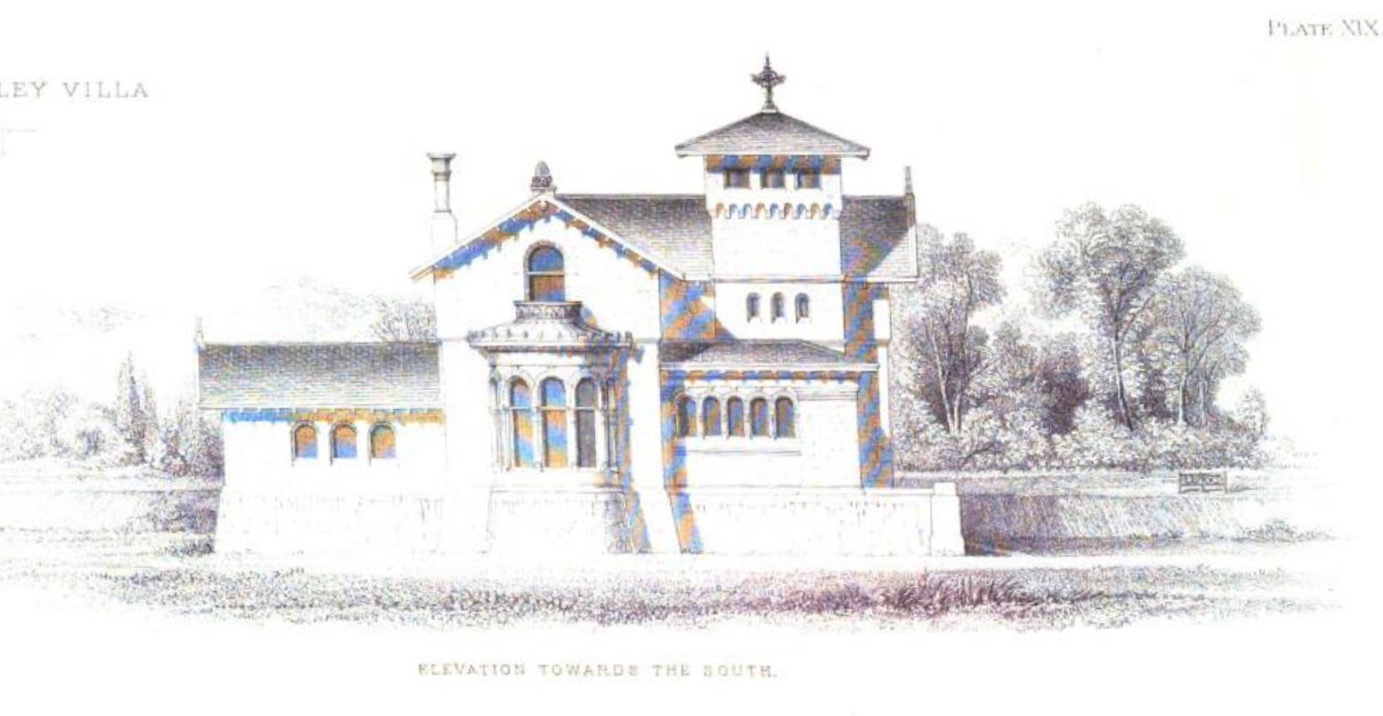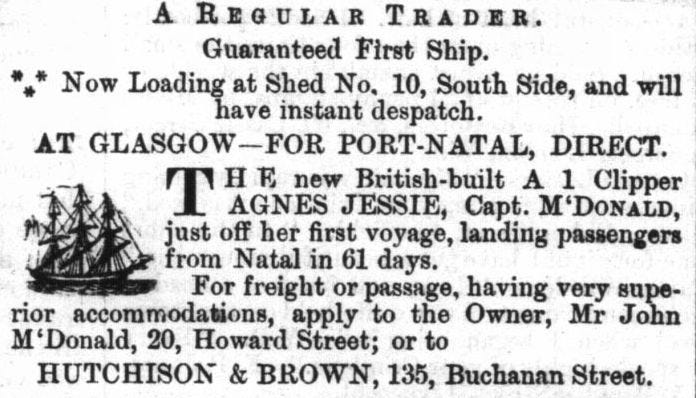Three houses in Bothwell are known to have been designed by Baird & Thomson: Glen Eden on Laighlands Road, Greenbank on Green Street, and Huntly Lodge. The first and second have both been altered, the first by division into two properties, the second by additions. The third was demolished after a fire in the 1930s, previously subdivided into flats.
The first two were built in the middle to late 1850s, and Huntly Lodge may have been constructed around the same time. Baird & Thomson’s connections with Bothwell are unknown. We have only one suggestion regarding the person believed to have commissioned the building, and that appears to be incorrect.
Glen Eden
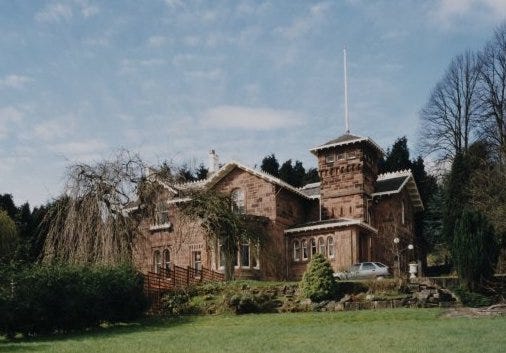
Gavin Stamp, in his ‘List of Works’ in Alexander ‘Greek’ Thomson1, describes this as a ‘Villa in round-arched style similar to Craig Ailey, Kilcreggan’ and completed in 1855. Similar seems an understatement: here, Thomson seems to be replicating and expanding on Craig Ailey, completed in 1850, some five years before Glen Eden.

Where Craig Ailey sits with a view across Loch Long, however, Glen Eden sits on a platform site overlooking farmland and woodland.

Glen Eden is also Craig Ailey writ larger: while the front of the property appears to mirror the Loch Long villa, the rear is expanded from the drawings in Villa and Cottage Architecture (below), with an upper floor added, as well as outbuildings which may also be contemporary with the property, probably to accommodate a larger resident family.
By 1912, the house appears to have been called Craigievar, when it was occupied by Archibald Hamilton, a local JP, and his family. At some point, the house was subdivided into upper and lower flats; the name Craigievar appears to have been attached to the lower portion, at least according to estate agent advertisements in 19932. According to the advertisement, the original cornice work was retained when the building was converted.
The front walls of the property appear similar to the rubble-type walls used in Cove. Unfortunately, at some point before 2021, part of the front entrance was damaged, possibly by a colliding vehicle (below). It is not known whether the wall has been reinstated.
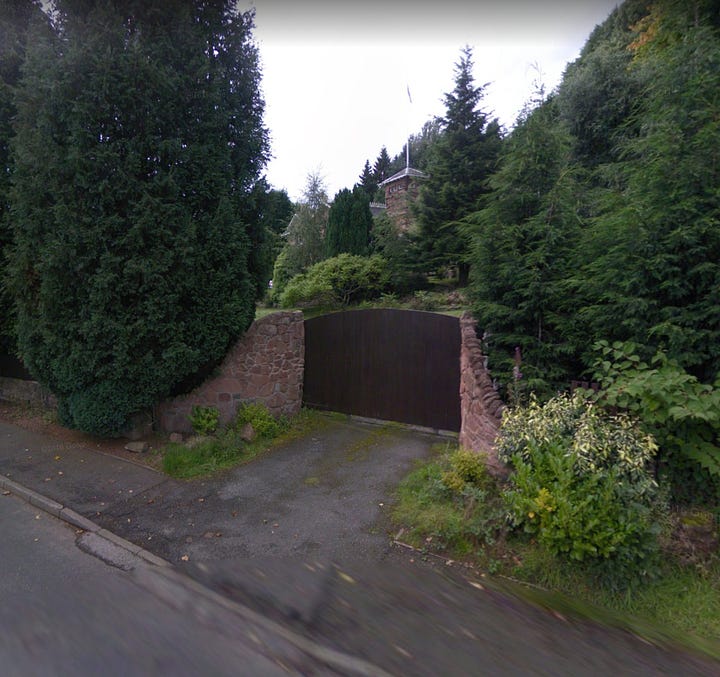

Greenbank
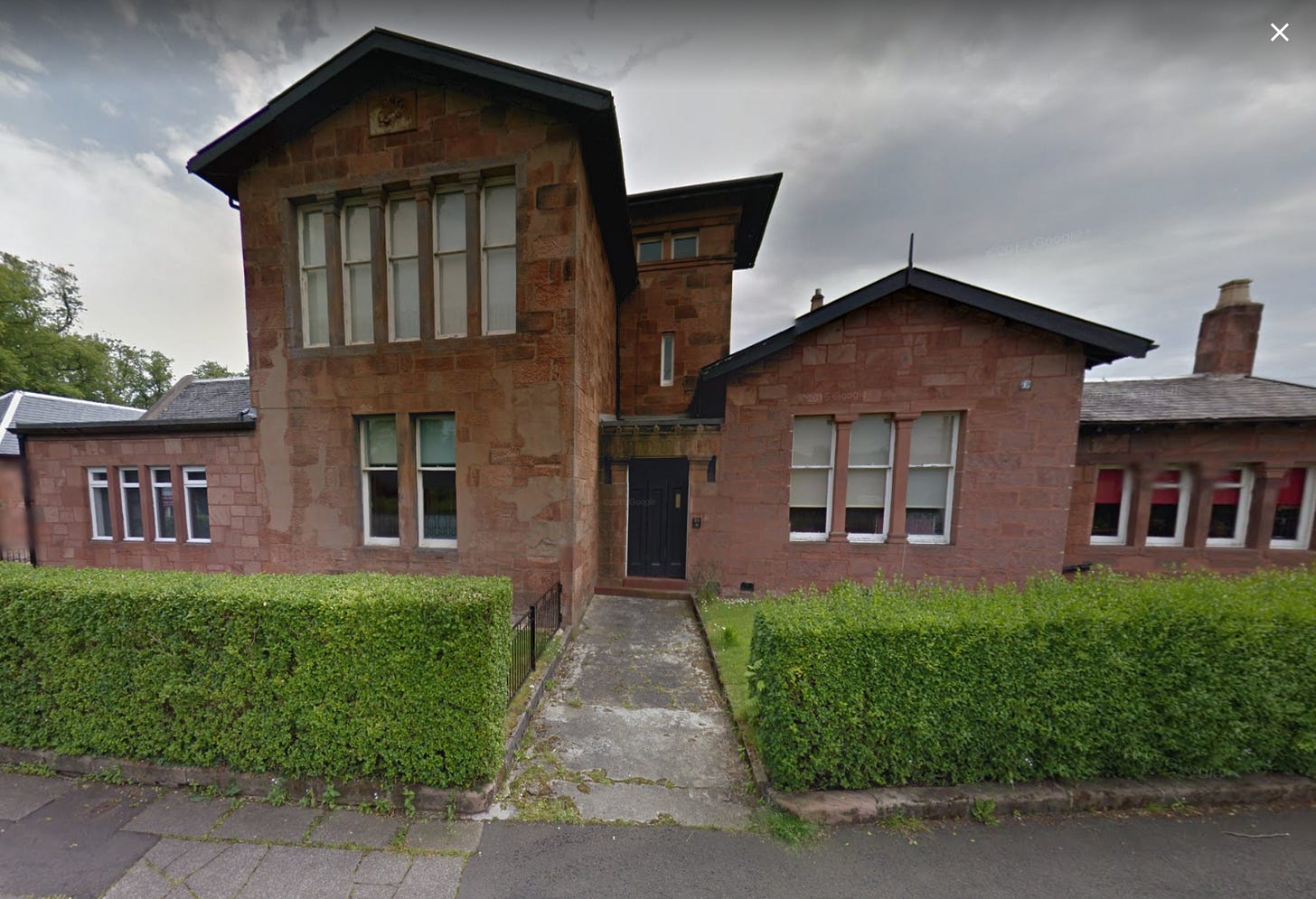
The ‘List of Works’ describes Greenbank as a ‘New villa, ?for John Macdonald, ship owner, wine merchant & bonded warehouse keeper’ built in 1855. The house is notable for being both externally plain in terms of features and built from red sandstone, with some of the physical form of Craig Ailey but squared off and stripped of all ornament. Both wings appear to be extensions from the original.
It is unlikely that the house was built for John McDonald, who was only 24 in 1855 and working as a clerk when he married Agnes Brown Holt that year. However, probably building on the knowledge and financial support of his father, an excise officer in Inverness, by mid-1857, he was trading as a bonded storekeeper and insurance agent out of 20 Howard Street (situated behind the Customs House, there were various bonded warehouses in the area). At the time, he was living at 21 Minerva Street, Finnieston, designed by Alexander Kirkland, and completed only four years before (The range from Nos. 1 to 21 has been demolished, but it mirrored the rather grand remaining block on the western side of Minerva Street). At his workplace, he would also have been aware of Thomson’s hat and cap warehouse for John Blair at the corner of Dixon Street, a few doors along.
He first appears at Greenbank in mid-1860, now described in the Glasgow Directory as a ‘bonded warehouse keeper, shipowner, and commission merchant’. Although he is unlikely to have commissioned the house, he may well have commissioned the 200-ton clipper, Agnes Jessie, launched that year and which completed its first return trip to South Africa in July 1861 (the Captain MacDonald mentioned may be a relation, possibly an uncle).
MacDonald was not always lucky: a sister ship, the Cygnet, was lost en route from Natal in October 1860, although the passengers and crew were saved.
By the time of the 1861 Census, John McDonald and his wife had had two daughters, but the first must have died in infancy. In 1862, he was still living at Greenbank, according to the Hamilton Handbook. Over the next decade, however, four more children were born, two sons and two daughters, and by 1871, the family had returned to Glasgow, living at 96 Stirling Road, where he now described himself as an ‘East India merchant and ship broker’, with Greenbank now occupied by a Mr A J H Sommerville3.
Within another decade, John McDonald had sold the Agnes Jessie (it began work in Australia and was wrecked off New Zealand in 1882). He moved his still-growing family to England, where he worked as a financial agent, possibly lending money for house purchases and, at one point, for the YMCA. He died in England in 1902.
Huntly Lodge
One challenge with researching private homes by name, mainly those constructed from the second half of the nineteenth century onwards, is the frequency with which the same names occur. Thus, in the 1860s, Huntly Lodge was the retirement home of the dowager Duchess of Gordon (It was constructed around 1742 from stonework taken from the ruined Huntly or Strathbogie Castle and used as a shooting lodge after her death). There were also Huntly Lodges at Merchiston outside Edinburgh and in Stranraer (the manse for the minister of Stranraer), at Ibroxholm in Govan, by 1886 at Lenzie and by 1893 at Hunter’s Quay on the Cowal peninsula, as well as in Inverness, and Wayne, Pennsylvania. Taking its name from Huntly Gardens, Huntly Lodge was a retirement home in the west end of Glasgow in the 1950s.
According to the 1858 Ordnance Survey, however, it began life as Tansybank, taking its name from the adjacent Tansy Well. By the time of the 1897 Survey, both name and well had disappeared.

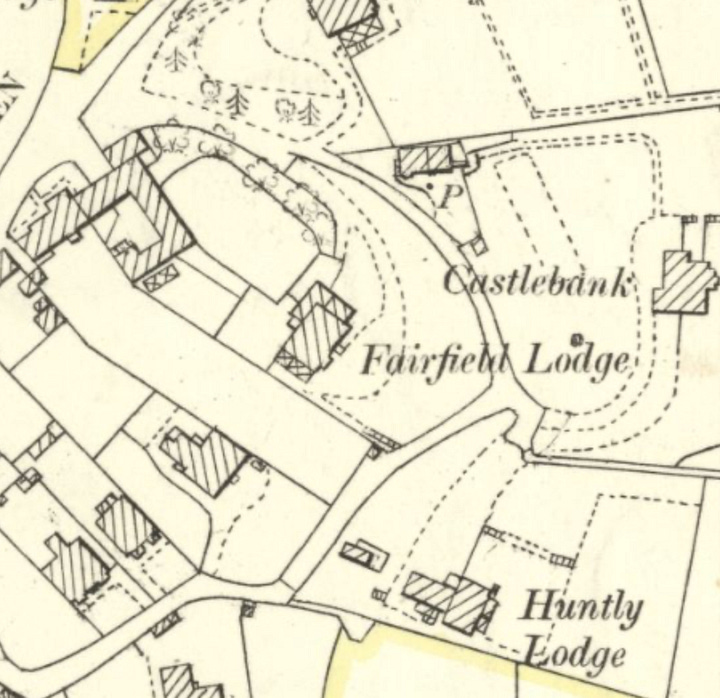
The ‘List of Works’ describes Huntly Lodge as being in the ‘Romanesque style, similar to Glen Eden, Bothwell’, which itself derived from Craig Ailey, indicating that at least some of Thomson’s designs, as with Adelaide’s Holmwood, had a shelf life. Although we know nothing of who commissioned the building, it had an eventful history.
In 1869, described as ‘that Beautiful Villa’, it was advertised to let, furnished or unfurnished, containing three public rooms, a smoking room in the tower, seven bedrooms, plus servants’ accommodation, kitchen, laundry and ‘all modern conveniences’4. James Parker, a Glasgow merchant, appears to have taken it, but four years later, it was put up for sale at £1,650, with immediate entry if required but to be withdrawn from sale if not purchased5. At some point, it was purchased by John Aiton of the Milnwood Iron Works, but by 1886, he had gone bankrupt, and the extensive house contents were sold6.
By February 1910, when it had been unoccupied for some time, a Glasgow syndicate decided it would make a viable private sanatorium to be used as ‘a natural health home for chest diseases, etc., and outdoor cure’. Residents ‘in the several mansions which closely adjoin the sanatorium’ were unimpressed. Nevertheless, it opened a month later, having been ‘artistically done up and comfortably furnished’ to be ‘run somewhat on hydro lines, though it is vegetarian’. Treatment, consisting of ‘careful dieting, baths, and massage’, was supervised by Mr and Mrs Robert Fleming ‘of Fleming’s Natural Health Establishment (Ltd.)’, he being a Hamiltonian and former missionary in South Africa. Almost exactly three years later, however, the company folded7.
In October 1914, the Lodge was made available by a Mr Taggart, possibly the-then owner, to accommodate Belgian refugees, and sometime after the war, it was divided into flats. In 1925, one of the residents, Mr Robb, a schoolmaster, alerted the fire brigade when the Lodge’s garage caught fire (neither the garage nor the Rover automobile parked there survived)8.
In October 1936, the house was severely damaged by fire. With the Hamilton and Bellshill fire brigades initially hampered by low water pressure, the right wing and upper floors were destroyed (‘two bedroom suites and other valuable furniture’ were lost, with damage estimated at £1,200, or £70,000 in current values). No lives were lost, and the lower flat’s occupants rescued at least some of their furniture9. The house appears to have been demolished shortly after. By then, Mr Robb, who owned the property (and may have owned it a decade before), had moved into Glasgow, living in another Thomson building, at 16 Walmer Crescent.
More Thomson?
But what are we to make of this property in Mill Road Bothwell? More Baird than Thomson, perhaps?
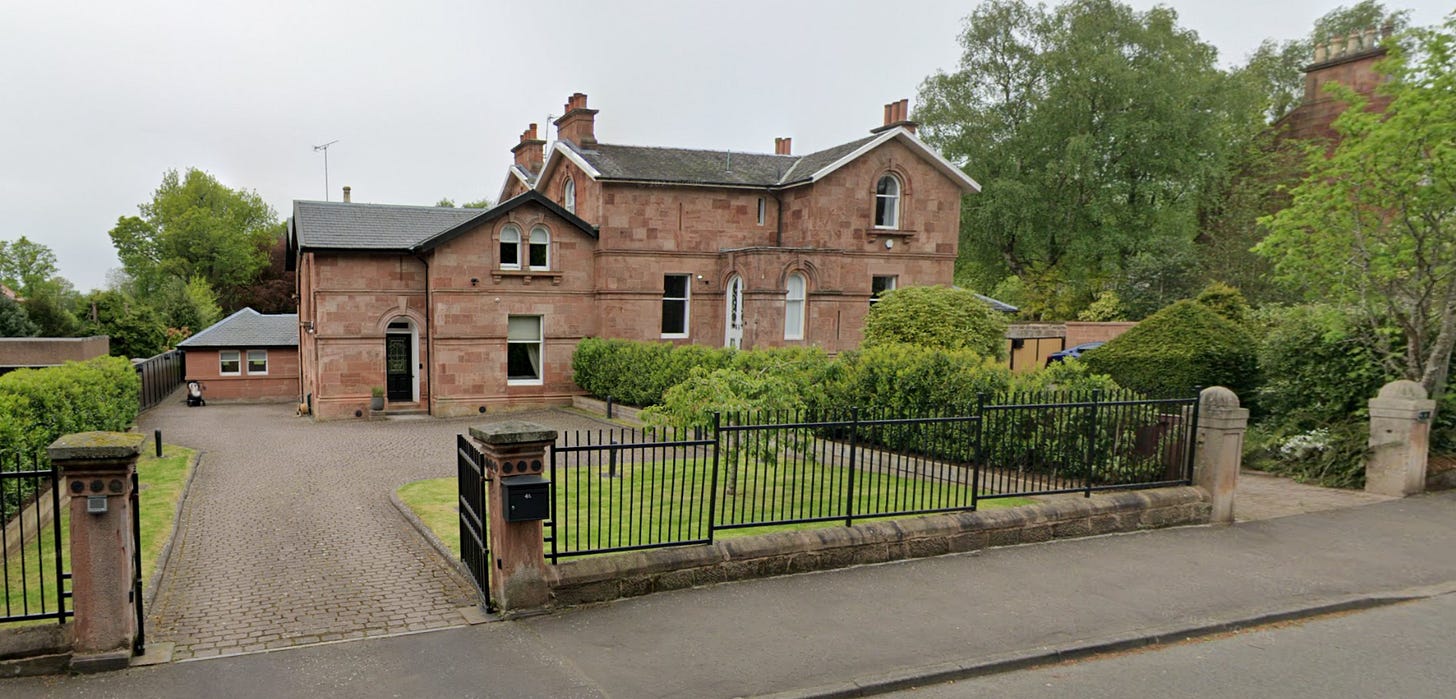
The property below, Douglas Lodge in Silverwells Crescent, also feels more Baird than Thomson if we take Baird’s claim to Pollok Academy as a model.
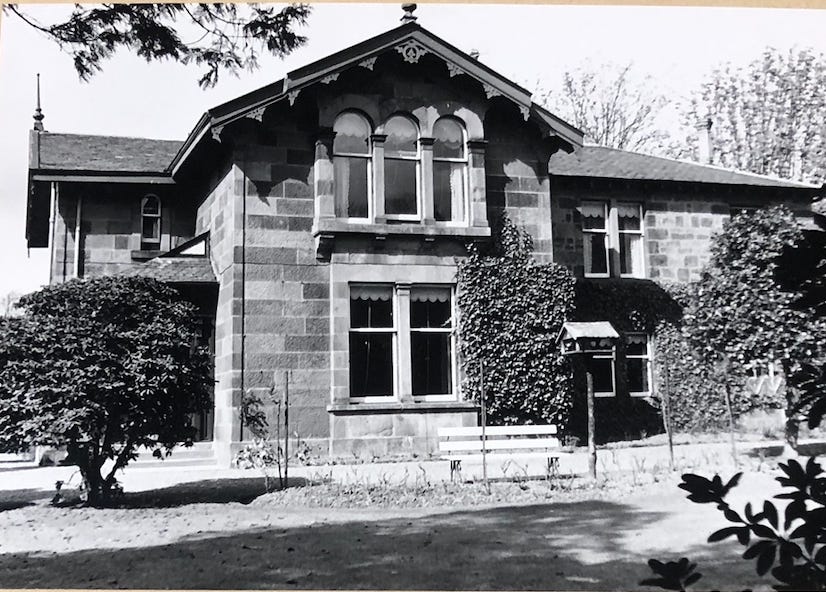
Also, but completely hidden by trees, other properties exist to the rear of Greenbank. As seen in this 1975 image from Canmore, Greenbank has square chimney cans, but the buildings behind bear lotus flower chimney cans, as seen in the recent post Can you buy Thomson? Are there more to find?
G Stamp, Alexander ‘Greek’ Thomson, London, 1999
Airdrie & Coatbridge Advertiser, 3 Sep 1993
North British Daily Mail, 11 May 1871
Hamilton Advertiser, 27 Mar 1869
North British Daily Mail, 2 Feb 1873
Hamilton Advertiser, 24 Apr 1886
Airdrie & Coatbridge Advertiser, 5 Feb 1910; Hamilton Advertiser, 5 Mar 1910; Hamilton Advertiser, 8 Mar 1913
Hamilton Advertiser, 31 Oct 1914; Motherwell Times, 7 Aug 1925
Bellshill Speaker, 9 Oct 1936




